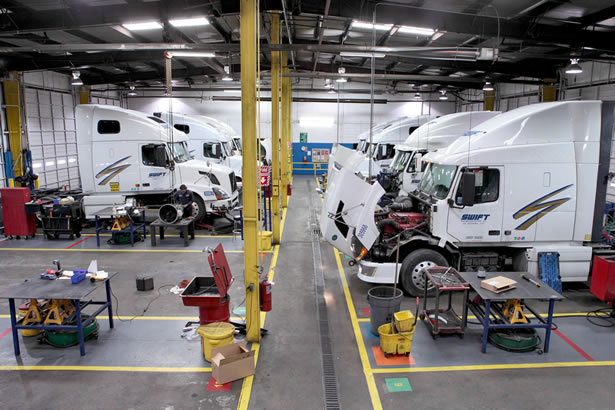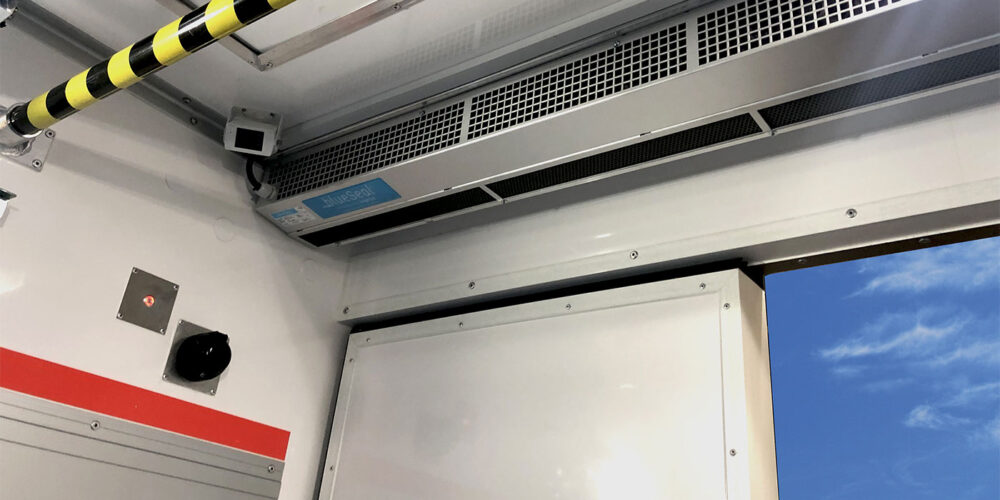According to Rick Martin, senior manager of aftermarket training for Meritor, when it comes to purchasing replacement friction material for air disc brakes (ADB), there are some things fleets need to know—the most important of which is buying the same lining material the OEM installed on that vehicle; i.e, replace like for like.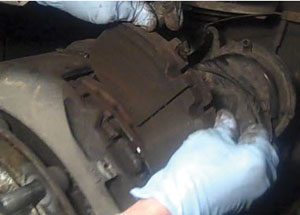
“OE brake manufacturers, like Meritor, spend a lot of time and money on R&D to produce the correct brake linings for specific vehicle applications,” he says. “Some fleets think they can buy less expensive replacement friction, but they may be compromising performance and safety. However, if the vehicle has changed applications, then consultation with a lining provider may be necessary to spec the correct lining for the new application for best performance.”
Martin goes on to say that many major fleets buy only OE replacement friction material for their ADBs. The reason from a safety and liability standpoint is if the vehicle is in a major accident, investigators conduct a thorough inspection of the brakes. For 29.4% of trucks involved in crashes, brake failure, brakes out of adjustment, etc., is an associated factor, according to the U.S. Department of Transportation’s Federal Motor Carrier Safety Administration. Fleets know that spec’ing OE replacement friction means the brake lining on that vehicle meets all regulations of the Federal Motor Vehicle Safety Standard-121, so lining quality is one less item to be concerned about.
So why spec ADBs over drum brakes in the first place? ADBs provide surer, safer stops, less maintenance and longer lining life—adding up to longer vehicle up-time and better performance than a comparable drum brake.
“Safety and longer life are a key reason to specify ADBs and OE replacement friction material,” Martin continues. “ADBs perform better; the metallic brake pads help to dissipate heat generated from friction created during braking, reducing brake fade and increasing lining life.” With component warranty on ADBs equal to a comparable drum brake, ADBs are a logical choice for safety and performance.
Still a new choice
Jim Clark, director of engineering for TMD, says, “ADBs are still relatively new to the North American market, and therefore the choice of air disc replacement pads is somewhat limited. But fleets can still look to aftermarket pads to reduce replacement part costs and improve lining life.”
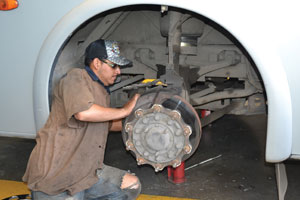 As with drum brakes, he notes, this includes a selection from different friction levels—generally the lower the friction level of the pad, the longer it will live.
As with drum brakes, he notes, this includes a selection from different friction levels—generally the lower the friction level of the pad, the longer it will live.
“For this reason, TMD offers three different air disc pad friction levels, all manufactured in North America,” Clark says. “However, we also recommend that fleets select aftermarket pads that meet the OE FMVSS 121 dynamometer standard, for the axle rating and air chamber size on the vehicle. This is complicated by a range of air chamber sizes that are being used on air discs. As an example, for a typical 20,000-lb. rated axle, fleets could find ADBs with chamber sizes of T18, T20, T22 or T24, instead of the standard ‘one size fits all’ T30 for drum brakes.”
The best way to determine if a pad meets the OE 121 test for a specific vehicle’s air chamber and axle rating is to obtain the test results from the manufacturer’s sales literature or contact the company directly. A final way is to look at TMC’s Recommended Practice RP628, “Aftermarket Lining Qualification,” which lists friction materials that have passed the 121 standard.
Due to the more complex selection of aftermarket pads for disc brakes, fleets should expect air disc pad suppliers to be more available to assist quickly and easily with their questions. Early this year, TMD announced a new technical support program in which friction material engineers are available to answer fleet questions. Beyond that, fleets should expect their pad and brake lining supplier to assist whenever they have issues with their brakes.
Know your supplier
Alesha Erving, product manager of commercial markets for Abex Brakes/Federal-Mogul, reminds fleets, “One of the most important things any fleet should know is who manufactured the pads they are planning to install. It’s vital to know what level of experience the manufacturer has in the commercial vehicle braking category. Are they an OE supplier? What types of R&D and testing do they perform? Can they provide the technical support most fleets count on?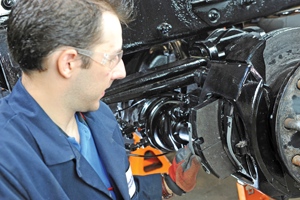
OE ADB pads must go through rigorous testing protocols before they are placed in service—an important quality distinction that helps ensure the safety and performance every fleet demands, she says, adding that as a global supplier of OE air disc pads, “Abex has the expertise needed to provide proven, world-class formulations that meet the toughest standards of the most demanding customers.”
Erving goes on to say that it’s important to know as much as possible about the vehicle. What is its specific vocation? How is it used?
She acknowledges that technical training services are expensive and require the manufacturer to have a real stake in the friction category, but a fleet can learn a lot about a supplier—and its products—based on how well it provides technical support. Abex offers an on-site ADB clinic that covers the basics of the most popular systems and provides helpful, time-saving troubleshooting tips for maximizing cost-per-mile. I also offers troubleshooting information in its electronic catalog.
“As we start to see more vehicles equipped with ADBs, especially in the wake of the RSD regulations, it’s important to partner with a supplier that has a foundation brake heritage and proven OE manufacturing expertise,” Erving adds.
Changing ADB pads
Changing ADB pads and rotors requires less than half the time needed for a drum brake repair, so fleets can significantly reduce vehicle downtime and labor costs.
That being said, Erving advises regular brake inspections, which are a very important part of the equation. Just like drum brake maintenance, it is essential to have a preventative maintenance schedule for vehicles equipped with ADBs. Checking pad thicknesses, wear patterns and caliper clearances and inspecting the rotor surfaces for cracks is key to maintaining a road-ready vehicle. “We also recommend fleets become familiar with the CVSA out-of-service criteria for ADB,” she adds. Technicians should always consult the OE service manual for proper tolerances and recommended inspection practices for a particular brake system.
Sophisticated system
When it comes to choosing the right ADB pads for their operation, fleets need to know that the ADB system is very sophisticated, says Rafael DiBuono, Fras-le North America product manager. He advises they be replaced with high quality OE-equivalent friction material and should be changed in pairs.
There are some special considerations when changing ADB pads, DiBuono notes. “First of all, you need well-trained technicians. Then you need to look at the status or consideration of the rotors. Next, all Pneumatic components that make up the air brake systems should be completely checked.”
He notes that fleets will spend more money on ADBs, but they provide a better return on investment versus a drum brake system, and they are more responsive than drum brakes.
DiBuono adds that warranty is very important, as it provides protection on workmanship and premature wear—because the air brake system is a safety component, proper warranty is critical.
OEM choice
Paul Chappell, product manger for Haldex, says, “The right pad for the application is chosen by the OEM in consultation with the ADB manufacturer. The fleet needs to ensure they are replacing with OEM or OEM-equivalent pads and that the pad meets the original specification regarding material and structural performance. Also, the replacement pad must be the same physical dimensions to the original and approved for the ADB caliper in question.”
He goes on to say that fleets should expect a readily available supply of appropriate replacement pads through a national distribution network or OES distribution, as well as product and field service support.
As for warranty, ADB pads are expected to have a longer life compared to drum shoes, he notes, how-
ever, fleets should expect a minimum one-year warranty for coverage against material and workmanship defects. ADB pads are a wear item, and regular recommended maintenance procedures for the ADB caliper and associated components is necessary to ensure satisfactory pad function and performance.
Chappell adds that when replacing pads, fleets should make sure the ADB caliper is functioning properly and that the replacement pad is properly installed and retained.
ADB friction is key
Gary Ganaway, director of marketing and customer solutions at Bendix Spicer Foundation Brake, says, “Friction is an integral part of the brake system. In particular, the brake mechanism and adjuster have been calibrated to work best with the mechanical characteristics of a given friction. Using a different friction during service can have severe impacts on the proper operation of the brake and on stopping performance.”
The production of proper friction is not as simple as providing a material, which simply fits in the brake assembly, Ganaway notes. The friction supplier should be competent enough to supply materials as OE—this is an indication that the materials have the proper mechanical characteristics, swell and growth, stopping power, heat rejection, fade and recovery. In addition, the supplier should have knowledge of specific applications and have demonstrated the ability to offer solutions.
An inspection of the foundation brake should be performed when changing the ADB pads, Ganaway says. The rotor should be inspected for cracks and uneven surfaces, and the thickness should not be less than the manufacturer’s stated minimum thickness. The brake assembly should be inspected to ensure that any boots are not torn or damaged, that the caliper is sliding freely, and that there is not excessive play in the guidance system, he adds. Conduct a visual inspection for any damaged or missing components. The brake chamber and air lines also should be inspected for air leaks and damaged or worn components.
“The best warranty is the one that you don’t need,”states Ganaway. “Traditionally, warranty coverage is considered an indicator of how robust or effective a product is—the longer the warranty, the more durable the product. In addition to the warranty period, there is the claim administration process. Make sure there a is a convenient process for reimbursement when a claim is filed, and is the turnaround time reasonable so that the fleet isn’t inconvenienced.”

